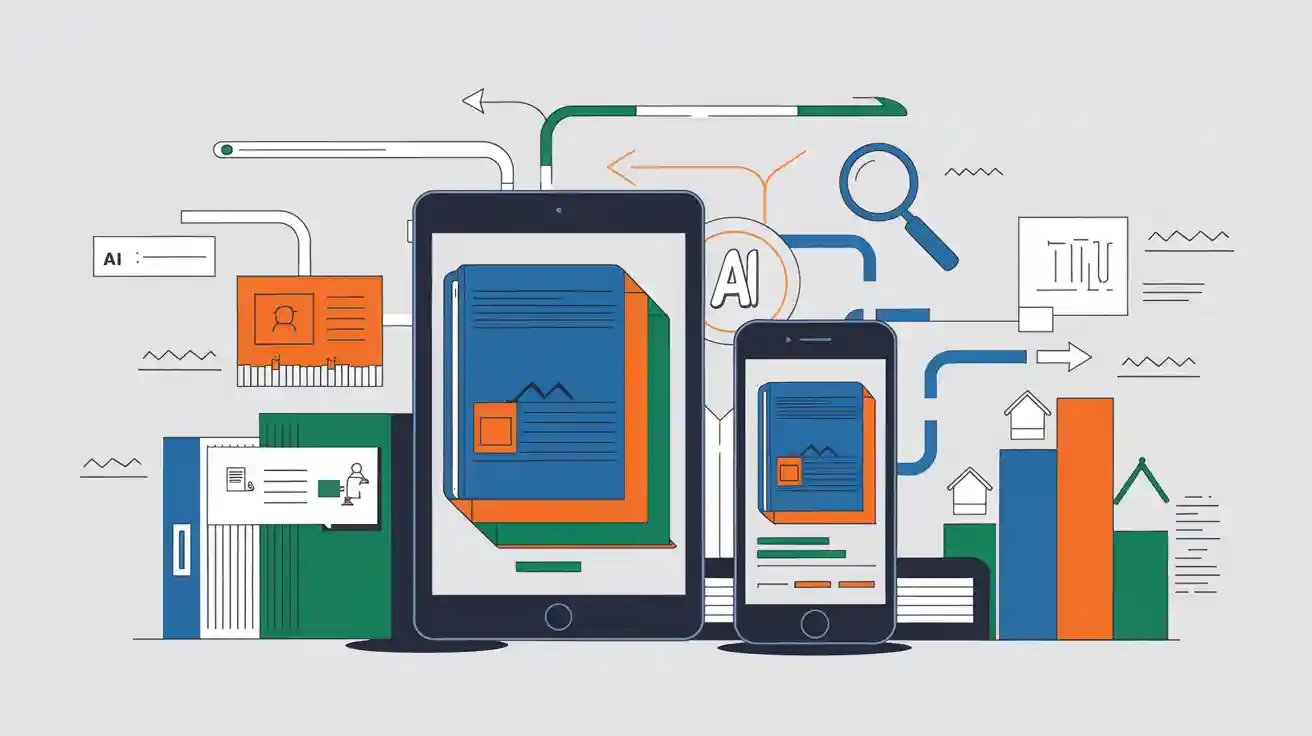What is an eBook? eBook Definition, Key Features & Modern Applications
Discover what an eBook is, its core definition, key components, and how eBooks drive content marketing, lead generation, and brand visibility in AI search. Learn the difference between eBooks, white papers, and PDFs, plus real-world applications for modern brands.


One-Sentence Definition
An eBook is a book-length publication presented in digital format, designed for reading on computers, tablets, e-readers, or smartphones, often featuring reflowable text and multimedia elements.
Detailed Explanation
An eBook (short for electronic book) is a digital file that contains text, images, and sometimes audio or video, optimized for display on electronic devices. Unlike traditional print books, eBooks can be distributed instantly online, updated easily, and accessed from virtually anywhere. According to the Council on Library and Information Resources (CLIR), eBooks are not just digital versions of print books—they represent a new form of content delivery, supporting features like search, annotation, and interactive media.
eBooks are typically distributed in formats such as EPUB, MOBI, or PDF. The most popular formats (like EPUB) support reflowable text, meaning the content automatically adjusts to fit different screen sizes, enhancing readability. eBooks can be protected by digital rights management (DRM) to control access and copying, and are often sold or shared through platforms like Amazon Kindle, Apple Books, or direct brand websites.
Key Components of an eBook
Content: Text, images, and sometimes audio/video, structured into chapters and sections.
Format: Common formats include EPUB (reflowable), MOBI (Kindle), and PDF (fixed layout).
Distribution Platform: Online stores (Amazon, Apple Books), brand websites, or content marketing platforms.
Reading Device: E-readers (Kindle, Kobo), tablets, smartphones, or computers.
DRM & Security: Optional encryption to protect copyright and control distribution.
eBook vs. White Paper vs. PDF
Feature | eBook | White Paper | PDF Document |
|---|---|---|---|
Purpose | Educate, engage, convert | In-depth analysis, persuade | General document sharing |
Audience | Broad (all levels) | Decision-makers, technical | Any |
Style | Accessible, visual | Formal, data-driven | Varies |
Format | EPUB, MOBI, PDF | ||
Interactivity | High (links, media) | Low | Low |
Real-World Applications
Content Marketing & Lead Generation: In B2B and B2C marketing, eBooks are powerful tools for lead generation and brand authority. By offering in-depth guides, industry trends, or resource lists, brands can attract prospects, capture contact information, and nurture leads through the sales funnel. eBooks are often used as "lead magnets"—free downloads in exchange for an email address.
Brand Visibility in AI Search: With the rise of AI-powered search engines (like ChatGPT, Google AI Overview, and Perplexity), eBooks play a crucial role in boosting brand visibility. Well-structured, authoritative eBooks are more likely to be cited or summarized by AI tools, increasing a brand’s presence in AI-generated answers. For example, using a platform like Geneo, brands can analyze how their eBooks perform in AI search results and receive actionable recommendations to optimize content for better visibility and engagement.
Education & Training: eBooks are widely used in education for digital textbooks, training manuals, and interactive learning resources, offering easy updates and multimedia enhancements.
Related Concepts
White Paper: A technical, data-driven report aimed at decision-makers, often more formal and detailed than an eBook.
PDF: A fixed-layout document format; while some eBooks use PDF, most prefer reflowable formats for better device compatibility.
Lead Magnet: Any valuable content (often an eBook) offered in exchange for user information to generate leads.
Content Marketing: A strategy that uses valuable content (like eBooks) to attract, engage, and convert prospects.
Digital Publishing: The broader field encompassing eBooks, online articles, and multimedia content.
Visual Guide: eBook Structure
Cover & Title Page
Table of Contents (with clickable navigation)
Chapters/Sections (with images, charts, and actionable insights)
Case Studies or Examples
Calls-to-Action (CTAs)
About the Author/Brand
Why eBooks Matter for Modern Brands
eBooks are more than digital books—they are strategic assets for education, lead generation, and brand building. Their flexibility, interactivity, and distribution power make them essential in today’s digital marketing and AI-driven search landscape.
Ready to see how your eBooks perform in AI search and optimize your brand’s digital visibility? Try Geneo and unlock actionable insights for your content strategy.





